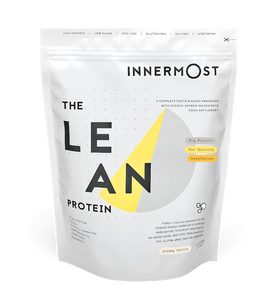Resistance bands are the ideal low-impact way to exercise. Forget needing to go to a gym, lug around heavy weights or even leave the house - resistance bands are simple, endlessly versatile and even, dare we say, fun to use.
Made of stretchy rubber and available in an endless series of colours, sizes and permutations, there’s a resistance band for every occasion and exercise under the sun. You can use them no matter your age or fitness level, and they are also be great for using when you’re injured, as the different levels of bands allow you to gradually build up your strength.
Resistance bands are ideal for building muscle endurance and evening out muscle imbalances, as they train your muscles to last longer under strenuous conditions. They’re also a good way to gently warm up your muscles before hitting the weights.
This resistance band shoulder workout will stretch, work and strengthen your shoulders, arms and other muscles. As the bands become resistant the more you stretch them, it’s easy to modify how intense a movement is. And as shoulders are prone to injury, these shoulder exercises allow you to slowly build up your stability and rotation to protect your shoulders against pain or overuse.
Lateral raise
This resistance band exercise helps to improve shoulder mobility, which is important for staying flexible and ready for any workout. It targets your shoulders and upper back, and your core muscles.
Place the middle of the band under your feet, and hold each end of the band in each hand with your palms facing inwards. With a slight bend in each elbow, raise your arms out to the side until they’re slightly higher than shoulder height. Pause for a few seconds, then return in a controlled way to the starting position. Repeat 10-15 times.
Front raise
If you ever suffer with shoulder pain and particularly if you sit at a desk all day, this exercise will help to strengthen those muscles and decrease your shoulder tension. Make sure you’re practising proper posture while doing this, to encourage your body to stay long and supple.
While standing in the middle of your resistance band, hold each end in each hand and place your palms on your thighs. Slowly and carefully, raise your arms in front of you until they reach shoulder height. Pause for a few seconds before returning your hands to your thighs once more, then repeat 10-15 times.
Band pull-apart

Struggling with your posture? This resistance band shoulder workout will sort you out. It helps to prevent rounded shoulders and improves the range and mobility of your shoulders and upper back. For a more intense exercise, move your hands closer together on the band to increase the resistance.
With both hands on the band, hold your arms straight out in front of you. With slightly bent elbows and a straight back, pull the band apart as much as you can, drawing your shoulder blades together. Hold this position briefly, then return slowly to where you started from. Repeat 10-15 times.
Overhead band pull-apart
To continue to strengthen your shoulders and upper back, this overhead shoulder exercise will do the trick. It also targets your triceps.
Hold the resistance band in each hand straight above your head. Pulling the band apart, lower your arms to shoulder height while pressing your hands outwards, towards the sides. After holding for a few seconds, return to the centre and repeat 10-15 times.
Reverse fly
Do you hunch over a laptop all day? Strengthen your shoulders, upper arms and upper back with this resistance band exercise.
Start by standing in the middle of the band. Hold the left side of the band in your right hand, and vice versa. While hinging forward from your hips and keeping a small bend in your knees, pull the band upwards and outwards until your hands are chest height or higher. Draw your shoulder blades together while you hold this pose before returning to the starting position in a controlled way, and repeating 10-15 times.
Standing row
Always wanted the strong shoulders of a rower? This resistance band shoulder workout will strengthen your lats and lower trapezius.
Tie or anchor the middle of your resistance band around a door handle or similar place. Holding an end in each hand, keep your elbows bent and forearms parallel to the floor as you move your arms straight back to the sides of your ribs. Slowly return back to where you started from, theme repeat 10-15 times.


















